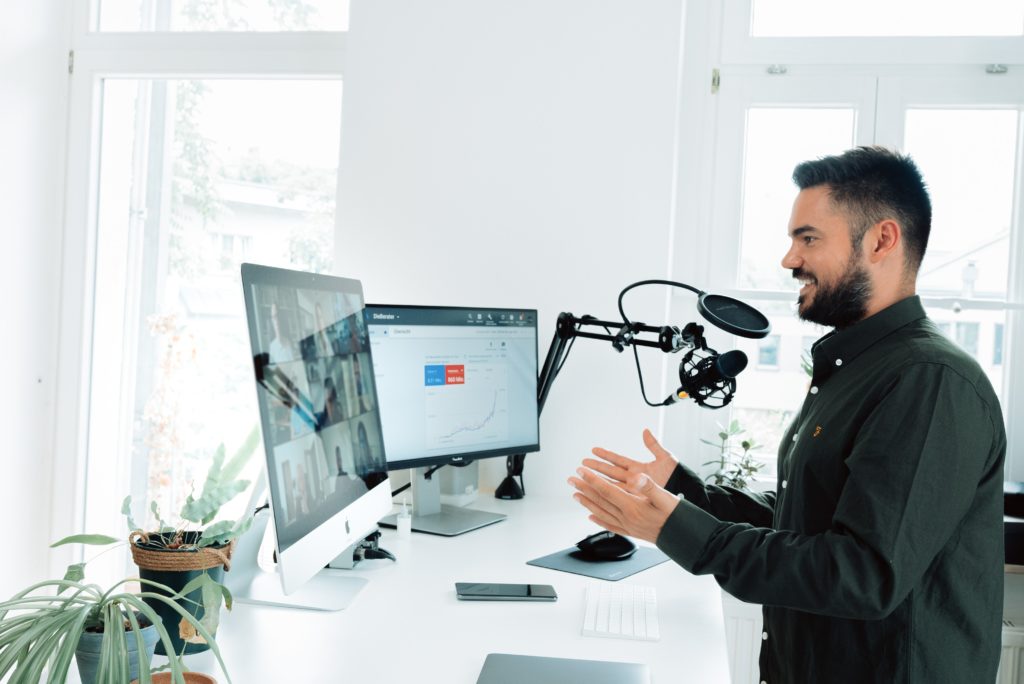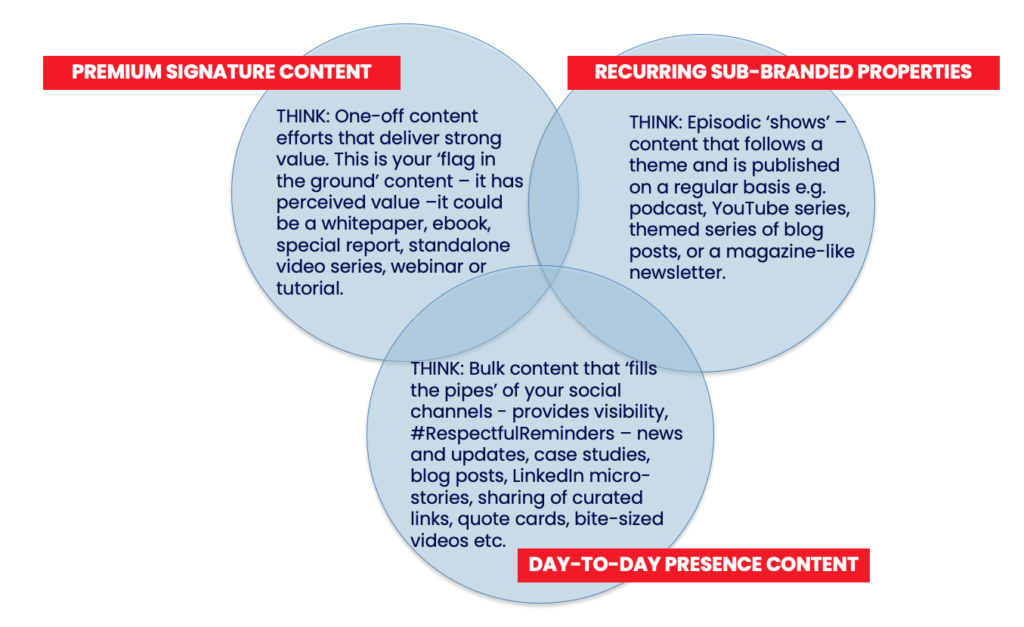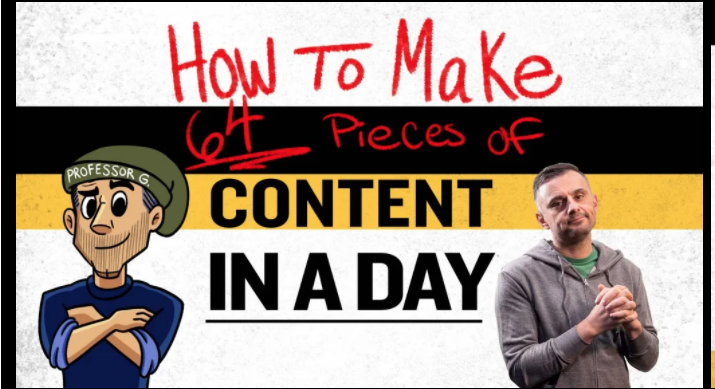
When we think about creating content for our audience, all too often we default to blog articles or YouTube videos.
If you’re a visually-oriented brand, photography probably takes centre stage in your thinking. And an audio-only podcast often gets a run today too because, well, they’re popular, right?
Not that there’s anything wrong with any of these mediums by the way. I love them all, and have produced a heap of text/video/audio content over the journey.
Usual suspects
But by narrowing our scope, we run the risk of neglecting the myriad interesting and different ways we can deliver content to our audiences.
Moving beyond the ‘usual suspects’ – i.e. blog posts, YouTube videos, podcasts etc – let’s lift our heads up a bit and ‘stretch’ what we create across multiple modalities and mediums. Let’s extract the most value from the insights, ideas, stories, perspectives, advice and information we publish online!
To this end, I’ve developed a long list of the different ‘spaces and places’ you can publish your content (you can check it out below).
The modalities and mediums listed are in no particular order but merely serve to help us to think more broadly and creatively.
Of course, it’s not about simply publishing everywhere willy-nilly. This will drive you nuts and probably not get you the results you’re after. What’s more important is the strength of your ideas and the consistency of your story and your message. That’s the strategy planning part; now, on to the tactics!
Content Mediums Framework
I generally advise my clients to settle on their mainstay owned channel first: is it going to be a blog, a newsletter, a podcast or YouTube show (pre-recorded or live streamed)? Best to have your primary and secondary social channels pegged as well.
Nail these things first and then look to start branching out.
I’ve developed the following ‘Content Mediums Framework’ to help you. As you get more confident with your content creation, it’s time to get creative with the many and varied ways you can deliver your published information.

I’ve been using this framework in my speaking and with my consulting and coaching clients for years now, and the feedback has always been very positive. It’s a simple way to consign your content efforts to different ‘buckets’ as a way to think more creatively, to mix things up, to keep your content fresh and accessible to more people.
Most businesses produce DAY-TO-DAY PRESENCE CONTENT.
This is the bulk content that ‘fills the pipes’ of your social channels: it provides visibility and keeps you top of mind with your audience (which in turn helps build connection, trust and affinity), respectfully reminding people that you exist and you’re here to help. Think: news and updates, case studies, blog posts, LinkedIn micro-stories, sharing of curated links, quote cards, bite-sized videos etc.
I think business owners and marketers need to get their heads around PREMIUM SIGNATURE CONTENT.
This ‘bucket’ represents one-off content efforts that deliver strong value. This is your ‘flag in the ground’ content – it has perceived value in the eyes of the recipient. Think: whitepapers, ebooks, special reports, standalone video series, information-packed, non-salesy webinars, and tutorials.
When you get into the swing of things and your content confidence is high, then it’s time to consider developing and producing what I call a RECURRING SUB-BRANDED MEDIA PROPERTY.
Sub-branded media properties take a lot more effort as they’re designed for the long term, so you need to be committed and consistent. Think: episodic ‘shows’ – content that follows a theme and is published on a regular basis e.g. podcast, pre-recorded YouTube series, a live-streamed video show on LinkedIn/Facebook/Twitter (same time each week, for example), themed series of blog posts, or a magazine-like newsletter.
The power of sub-branded media properties is that they allow you to aim at niche audiences (if that’s your strategy) plus they give people the opportunity to discover your brand in a way that’s more subtle than an ad, for example. They might not come to your website and read your blog, but they may be interested in your podcast to subscribe.
Okay, now let’s get to the aforementioned list of channels and modalities (including the ‘usual suspects’); I suggest looking at these in tandem with the above Content Mediums Framework:
- social media posts/stories/videos — tweets, Facebook/Instagram posts, LinkedIn micro-stories/live-streams, TikTok videos
- podcast episodes/audio-on-demand/short-run seasons
- text articles (on your own blog or an external platform such as Medium, or an opinion piece or sponsored post in a third-party media outlet)
- YouTube videos (pre-recorded or live-streamed)
- photos, images and memes
- books (digital, hardcopy, audio)
- research reports and whitepapers
- downloadable PDF how-to guides
- Google Slides and Google Docs (yes, seriously: check out Not a Newsletter: A Monthly Guide to Sending Better Emails by Dan Oshinsky – 7000 readers and growing!)
- how-to guides, tutorials and templates (what about using Notion? – Check out Marie Poulin)
- infographics and charts
- animation and GIFS
- smartphone apps
- illustrations (check out SketchWow if you want to give DIY a shot)
- email newsletters (I’m currently using Substack – it’s terrific!)
- webinars (live and recorded/on-demand)
- roundtable discussion or expert interviews recorded via Riverside (or streamed live via Melon or Streamyard)
- LinkedIn Newsletters
- graphic recording (or scribing)
- audio snippets (or full tracks) via SoundCloud
- multimedia press releases (i.e. PitchEngine)
- micro-movies/mini-documentaries
- custom published hard-copy or digital magazines (for example, Mobimag makes it easy to create a mobile-first publication)
- social audio i.e. Twitter Spaces, Clubhouse, Racket
- events (yes, events can be classed as content e.g. a simple breakfast presentation, or a more formal gathering featuring a panel of experts, for instance).
- speeches and presentations (record video and upload to YouTube, publish audio to SoundCloud, transcribe and turn into an article etc).
BOTTOM LINE: Your content can find a home in many places today!
I reiterate, I’m not suggesting you spread yourself across every medium or channel as outlined above – that is not going to work for you.
The key is to be integrated and consistent. While the medium or modality is important to a fair degree, it probably doesn’t matter as much as you think. What does matter is the power of the idea, the story, the message and the insights provided. These are absolutely vital!

But I DO recommend you keep your eye out for new opportunities to present your content to the masses; keep things fresh and interesting!
Not everyone will sit down and read a blog post or watch a video – bring your ‘chunky’ content to life by repurposing it across different mediums (best-selling author Jay Baer does this well, while Gary Vaynerchuk takes it to a whole new level!).
Of course, your strategy will help guide what content mediums and modalities you should be using, and your time constraints and budget will also be a factor.
And remember: don’t be afraid to experiment a bit. Test and learn. Work out what’s working best for you and your audience, and then realign your focus accordingly.
The aim of this post is to highlight the importance of focusing on one’s mindset more than anything. I encourage you to ‘dig deeper’ and think more creatively about the content you produce. Do it well – with passion and purpose – and your audience will thank you for it!



Leave a Reply